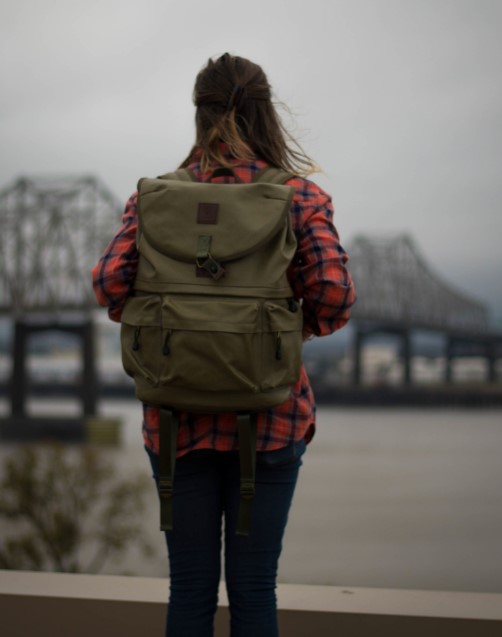
Earthquakes in Japan, ongoing violent conflict in the Middle East and escalating threats worldwide should prompt international travelers to prepare for the possibility of a hasty departure.
Travelers going overseas should register with their embassy, ensure all documents like passports and visas are in order, make certain financial resources are available to book unscheduled, urgent travel, keep a low profile, and consider packing an accessible Go Bag.
Whether you are traveling to a potentially dangerous region or already in one, preparing a Go Bag packed with key items will increase your likelihood of survival when it is necessary to immediately relocate to a safer area or depart the region at less than a moment’s notice.
A Go Bag is full of things you’ll want with you in an emergency when you have to drop everything and make a run for it. It’s small and light, like a knapsack, so you can grab it and go quickly and easily. It contains essentials for communications, cash, documents, food, water, navigation, first aid and clothing.

Communications
You probably have a cell phone, but service could easily be down in an emergency. Consider a two-way satellite communication device, if permitted in the region you are visiting, as well as signaling devices like a mirror and a whistle. Add in extra charging batteries. Remember, those devices may fail due to loss of charge or jamming. Add a small notebook with pencils.
Cash, Passport and Contact Info
Keep a sufficient amount of emergency cash in both local currency and a widely accepted international currency. ATMs and banking systems may be inaccessible during or after an emergency. Carry backup credit or debit cards in case your primary card gets lost, stolen or compromised.
Ensure you have your passport, identification and any necessary travel documents readily accessible. Keep them in a waterproof and secure location. Use resealable sliding channel storage bags to keep items waterproof. Carry a list of emergency contact numbers, including local authorities, embassy or consulate contact details, and the phone numbers of your loved ones back home.
Food and Water
Water is essential. Ideally, you need a gallon a day per person. No one could carry that much with them, so you’ll want to have water treatment supplies to purify and filter water. You can boil water, use chlorine and iodine, or a UV light purifier. Pack an aluminum cup and a tough, lightweight plastic water bottle, like Nalgene a bottle, for water.
Add high-calorie food with a blend of protein, fat and carbs. Energy bars are a good choice like RX Bars or LARABARs. Bouillon cubes — either veggie or meat stock — have a two-year shelf life. You’ll be able to stay hydrated, have a small amount of nourishment, and the warmth of broth is a morale booster. Pack multiple fire-making devices – like a lighter, matches or fire starters – for warmth, signaling and boiling water. Store them in a waterproof bag.
Navigation and Tools
No matter how well you know the area or terrain, mistakes can be made. Include navigation tools like a GPS device, a map and a compass. Include a small, powerful flashlight with extra batteries, and a headlamp since it leaves your hands free. Include a multi-tool, like a Swiss Army knife or a Leatherman, and a plastic camping spoon is a good idea.
First Aid
A stripped down first aid kit includes essentials: a Sam splint, some Ace bandages and gauze pads of various sizes, a tourniquet and a compression device that could be a lifesaver when you need to stop the flow of blood. Remember to include adhesive bandages, antibiotic ointment like Neosporin, lip balm like Chapstick and similar things for the smaller injuries that could get worse if left untreated.
Toss in a few N95 masks to prevent inhalation of dust, ash or any other particulate matter caused by the emergency event. Remember to pack over-the-counter and prescription medications you take regularly. Add a small supply of pain relievers, antacids or decongestants to your first aid kit.
Clothing and Hygiene
Pack a change of clothes matched to the season. Include rain or warm weather gear based on your location. Space blankets made of lightweight Mylar are easy to pack and can double as a reflective device. Consider your location and choose the most appropriate type of glove. Work gloves in case you need to move debris and another pair for warmth, waterproofing, dexterity, durability and usability.
Sewer and water utilities may not be in service during an emergency so include moist towelettes, toilet paper, garbage bags and plastic ties for personal sanitation and hygiene. Add a compact toothbrush and a small tube of toothpaste.
Mistakes to Avoid
There is no such thing as a “one-size fits all” comprehensive Go Bag. If you try to prepare for every possible circumstance then your Go Bag will be too big and too heavy. It’s crucial to stay informed about the local emergency procedures and listen to instructions from local authorities during an international emergency.
Taking these precautions will enhance your safety and preparedness when traveling internationally. If your emergency kit is well-equipped then your ability to get through a difficult emergency situation will be more successful.
Harding Bush is a former Navy SEAL and the manager of security operations for Global Rescue, a Lebanon, New Hampshire-headquartered provider of medical, security, evacuation and travel risk management services. Bush is an expert in procedures for high-risk travel, cultural awareness, crisis preparedness and operational planning.





















